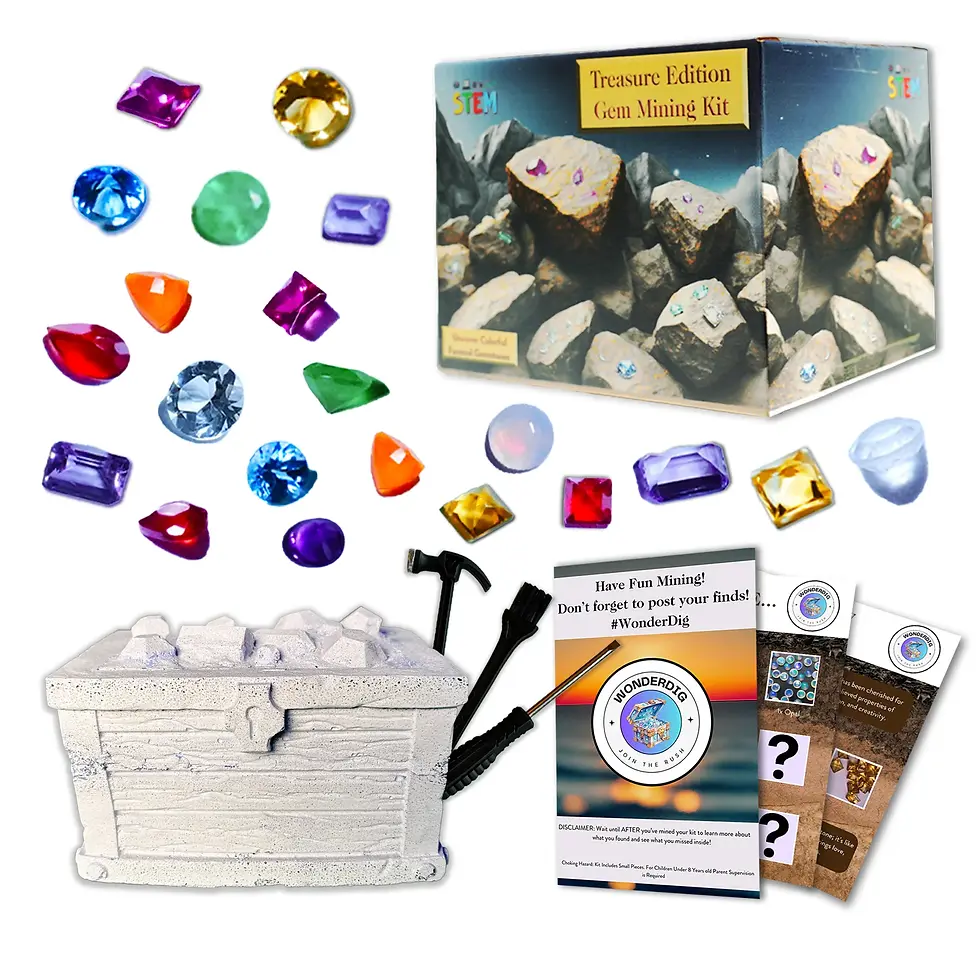The Art of Mineral Collecting: A Beginner's Guide to Discovering Nature's Treasures
Updated: Aug 19, 2024
Mineral collecting is a captivating hobby that invites enthusiasts to explore the natural world, uncovering the beauty and diversity of Earth's geological wonders. Whether you're drawn to the vibrant colors, intricate structures, or scientific aspects of minerals, collecting offers a unique opportunity for discovery and learning. This guide provides an introduction to mineral collecting, offering tips, techniques, and insights for beginners and seasoned collectors alike.

Understanding Mineral Collecting:
Mineral collecting involves gathering and cataloging mineral specimens for personal enjoyment, education, or scientific study. Collectors range from casual enthusiasts to professional geologists, each with unique interests and goals. The hobby offers a chance to explore nature, learn about geology, and create a stunning collection of Earth's treasures.
Popular Mineral Collecting Techniques:
Field Collecting: This technique involves searching for minerals in their natural environments, such as quarries, mines, and riverbeds. Collectors often use tools like rock hammers, chisels, and safety gear to extract specimens.
Mining Dumps and Tailings: Abandoned mines and tailings piles can be rich sources of mineral specimens. These areas often contain overlooked or discarded minerals that are accessible to collectors.
Rock Shops and Shows: Many collectors acquire specimens through rock shops and mineral shows, where a wide variety of minerals are available for purchase. Shows like the Tucson Gem and Mineral Show offer opportunities to connect with other enthusiasts and experts.

Top Mineral Collecting Locations:
Franklin and Sterling Hill Mines, New Jersey: Known for their rich deposits of fluorescent minerals, these sites offer unique collecting opportunities and educational tours.
Keweenaw Peninsula, Michigan: This region is famous for its copper deposits and offers a chance to collect native copper and other minerals in a historic mining area.
Tucson Gem and Mineral Show, Arizona: One of the largest and most prestigious mineral shows in the world, Tucson attracts collectors, dealers, and researchers from around the globe.

Identifying and Preserving Minerals:
Identification Techniques: Proper identification involves understanding a mineral's physical properties, such as color, luster, hardness, and crystal structure. Modern technology, such as apps and databases, can aid in identification.
Preservation and Display: To preserve the quality and value of mineral specimens, it's essential to clean, label, and display them in a controlled environment. Use acid-free labels and display cases with UV-protective glass to protect against light damage.
Environmental and Ethical Considerations:
Responsible collecting involves respecting natural habitats, following regulations, and minimizing environmental impact. Collectors should seek permission to collect on private land and adhere to guidelines for public sites. Supporting ethical and sustainable practices ensures the long-term viability of mineral collecting and helps preserve the beauty of our natural world.

















Comentarios